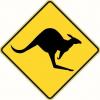
Originally Posted by
Tom M King

Don't think about even shavings. Just take off the high spots. Lay something across it so you can see where the high and low spots are. If you take anything off of the low spots you have to bring the whole thing down to that new lowest level.
Here's a video I made some years back flattening shutter panels. They didn't need to be as flat as a piece of furniture. Going on an 1850 museum house, it was better that they weren't perfect.
https://www.youtube.com/watch?v=SED7B65cppM
Is the video supposed to have sound?
Sharp solves all manner of problems.





 Reply With Quote
Reply With Quote






